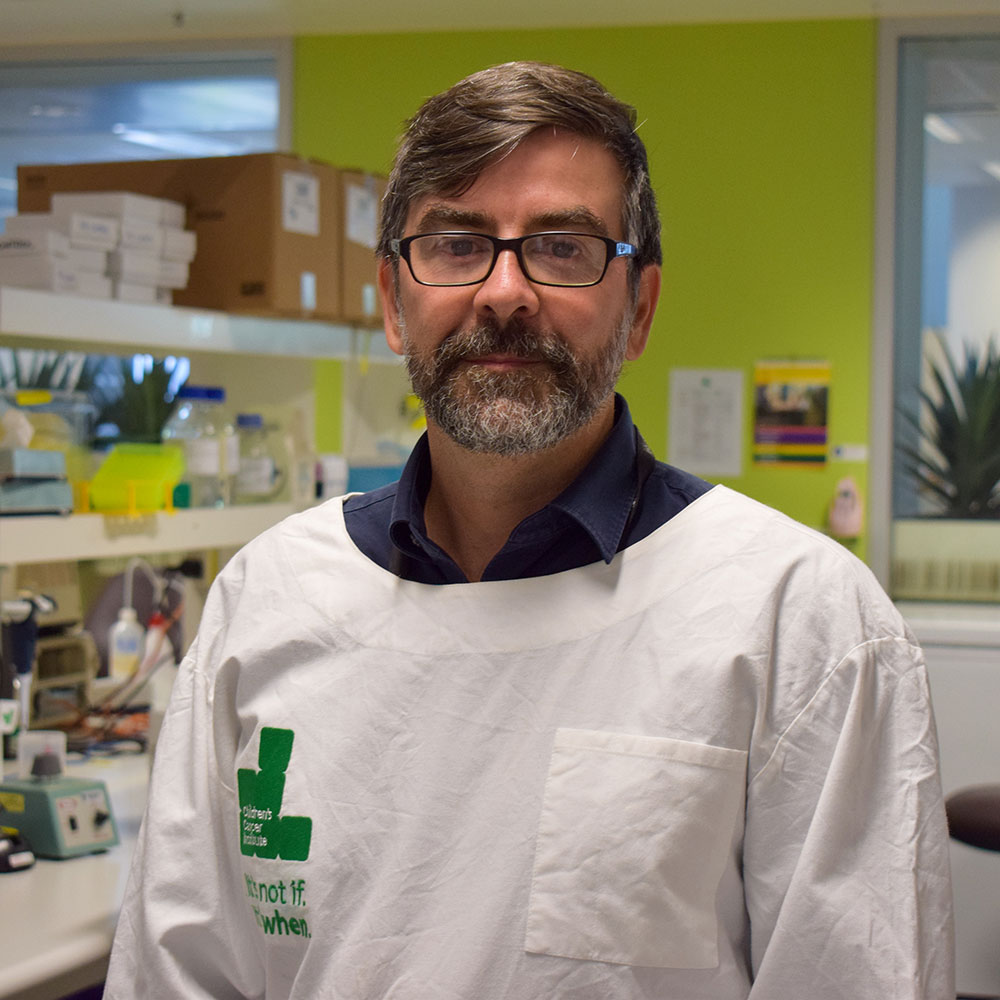Our researchers discovered the mechanism by which a modified natural compound disrupts the formation of tumours’ blood vessel networks in childhood cancer neuroblastoma. The international study, led by scientists at Children’s Cancer Institute and UNSW, is published in Scientific Reports and paves the way for less toxic treatments for neuroblastoma, a childhood cancer with an average age of diagnosis of just one to two years old.
The discovery was reported on the SBS news last night, with lead author Dr Orazio Vittorio discussing the findings and their implications.
Dr Vittorio, a Project Leader in our Tumour Biology and Targeting Program, observed in 2012 that the natural polyphenol catechin, found in things like green tea, slows tumour growth in the laboratory but unfortunately breaks down too quickly in the body to be effective. He knew he needed to prevent this breakdown if catechin was to be a future therapy. But how to stabilise it?
“We joined catechin with a sugar called dextran. We found this dextran-catechin complex is much more stable in the body and that it slows tumour growth by affecting copper levels – but we didn’t know precisely how,” he said.
“This is exciting because it’s a new target for the childhood cancer neuroblastoma that appears safe and has minimal side effects.”
Blocking the supply lines
Copper is a naturally occurring metal used in electrical wiring, roofing and coins, and an essential component of all living organisms. The new research showed that endothelial cells, the cells that line blood vessels, need high levels of copper, and that dextran-catechin disrupts the cells’ copper levels in several ways.
“Dextran-catechin inhibits specific copper transport proteins in the cells that line the blood vessels, altering intracellular copper levels. This prevents the cells joining together to form the network of vessels that supplies tumours with blood to keep growing,” explained Dr Vittorio.
The result is clearly visible down a microscope. When human endothelial cells were cultured and treated with dextran-catechin, the normally branching networks of blood vessels failed to form properly. Likewise, in mice, neuroblastoma tumours treated with dextran-catechin had significantly fewer blood vessels than tumours treated with the control solution.

Normal blood vessel networks (left) and the effect of Dextran-Catechin (right)
“This is exciting because it’s a new target for the childhood cancer neuroblastoma that appears safe and has minimal side effects,” said Dr Vittorio.
This study spanned several scientific disciplines. Researchers involved included PhD student Eugene Yee from UNSW School of Chemistry, Dr Orazio Vittorio and other researchers from Children’s Cancer Institute and the Australian Centre for NanoMedicine led by Professor Maria Kavallaris, ARC Centre of Excellence in Convergent Bio-Nano Science and Technology, and overseas researchers from universities in France and Italy. The journal article was drafted during our annual Manuscript Writing Workshop last year.
Scientific kudos and a new collaboration
Dr Vittorio presented these findings at the Nanotech France 2017 conference in Paris on 29 June. He was delighted by how well the work was received.
“After my talk, the keynote speaker came to congratulate me, and asked me to collaborate on her project. Having someone of that level wanting to collaborate with me at this stage of my career is great.”

Dr Vittorio (left) with conference delegates at Nanotech France 2017
Further laboratory research into dextran-catechin’s potential as a future treatment is underway.
Read the research article in the journal Scientific Reports.
Top image: Dr Orazio Vittorio discusses his research with SBS journalist Michelle Rimmer















